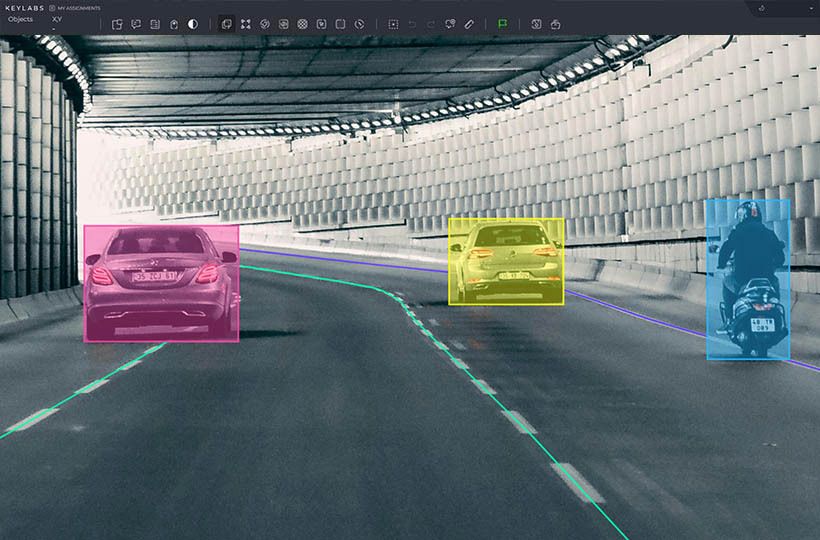Using GANs to Augment Data: Unlocking New Variants in Your Dataset
Data is a key aspect of machine learning and is used to train AI models. However, datasets have limitations, especially in specialized areas like medical imaging. GANs offer a solution to augment data by generating synthetic data that accurately reflects real-world examples.
GANs are built from two neural networks: a generator that creates the data and a discriminator that distinguishes between authentic and synthetic examples. This architecture allows GANs to generate realistic variations, expanding datasets and increasing AI model performance.
Quick Take
- GAN increases accuracy in chest X-ray classification.
- GAN architecture is lighter and more accurate than current CNN.
- Multi-class classification models achieved accuracy with GAN-enhanced data.
- GANs address data scarcity issues in specialized domains.
- GAN-based augmentation diversifies datasets and AI model generalization.

Introduction to GANs and Data Augmentation
A GAN (Generative Adversarial Network) is a generative adversarial network, a neural network in artificial intelligence. It creates new data instances that resemble real-world examples.
GANs in Data Augmentation
In computer vision tasks, GANs create indistinguishable images from real-world ones. They are used to train recognition models where access to real photos is limited. GANs create additional MRI or X-ray images in the medical field, preserving patient confidentiality.
In text or sound classification tasks, GANs create new speech fragments, audio signals, or short text messages that match a given pattern or semantics. This reduces the risk of overtraining the AI model and improves its generalization ability.
GANs increase the number of examples and improve the quality of training data by controlling the generation process. This is important in projects with class imbalance or unique events. This improves machine learning models' accuracy, robustness, and performance in real-world environments.
Understanding GAN Mechanics
A GAN consists of two neural networks:
- A Generator creates new data similar to the data in the training set.
- A Discriminator distinguishes whether the data is real (from the training set) or generated by the generator.
Competitive Process
Training a GAN is a competitive process. The generator tries to fool the discriminator, and the discriminator tries to detect fake data correctly. During the training process, both networks improve until the generator learns to produce very realistic data.
Problems and Solutions in GAN Training
Training a GAN faces several obstacles:
- Instability. Due to the constant competition between networks, progress is disturbed. One can learn faster, leading to an advantage over the other and stopping helpful learning.
- Mode Collapse. The generator can learn to produce only a few samples that the discriminator recognizes as accurate, resulting in the learning process remaining at the same level.
- Lack of clear evaluation. It is difficult for GANs to accurately evaluate progress, unlike conventional models, where there is an accuracy metric.
To solve these problems, the following methods are used:
- Gradient Penalty. An additional penalty for the losses helps reduce the risk of overtraining the discriminator and maintains balance.
- Label Smoothing and Noise Injection make training unpredictable, complicating the discriminator's task and forcing the generator to be more creative.
- Progressive learning. Increasing the images' size or the data's complexity allows the GAN to adapt to complex and unusual patterns.

Benefits of GAN-based data augmentation
GANs create new, different data samples that reflect the original data set. This makes the data sets diverse and scalable, useful in training AI models. In the medical field, data collection is limited, but GANs generate realistic synthetic images, expanding the data set for research and development.
Elimination of class imbalance
Thanks to GANs, class balancing is no longer a problem in machine learning. It allows you to generate more samples for underrepresented classes. This method reduces bias during AI model training and increases accuracy.
Improved AI model generalization
GAN-based augmentation methods improve AI model generalization. Due to the diverse data on which the AI model is trained, it is better at handling unseen data, reducing the risks of misinterpretation in real-world scenarios.
GAN-based data augmentation requires computational power, but its ability to generate high-quality, diverse data improves AI model performance and solves data scarcity problems.
Typical Applications of GAN-Based Augmentation
- Augmenting image data with GANs improves the quality of the AI model. Additional synthetic images reduce the risk of overtraining and increase the generalization of the AI model. GANs can generate examples of classes represented in fewer numbers, which helps maintain balance. They can also generate different variations of objects, change the conditions in the images (from sunny weather to rain), and create images with other defects. This improves computer vision results, especially in conditions of limited access to data.
- Augmenting text data with GANs has changed the task of natural language processing. By creating the synthetic text needed for the context, GANs augment limited data sets. Thanks to this method, the size of the text sets increases. This improves the performance of the AI model and reduces the level of overfitting.
- Augmenting video and audio data expands the capabilities of AI applications in video and audio processing. In video, GANs generate new frames that continue or change the plot. This increases the size and diversity of the training set. In audio, GANs create synthetic sound fragments that preserve the intonation and timbre features of speech, music, or the environment. This improves speech recognition, increases the accuracy of voice synthesis, and generates realistic sound environments for virtual assistants or games. This allows AI models to be trained on limited or unbalanced datasets, which reduces bias and improves system performance.
Frameworks for Implementing GANs
TensorFlow and PyTorch are leading GAN frameworks. Developed by Google, TensorFlow has an ecosystem that makes building, training, and visualizing AI models easy. This makes it convenient to deploy GANs in production environments. TensorFlow integrates well with Google Cloud tools, allowing for large datasets and distributed computing.
PyTorch is flexible and simple in syntax, and its computational graphing changes the architecture of AI models on the fly, which is needed when developing non-standard GAN structures. PyTorch also has a large community where you can find many examples, repositories, and open libraries for training GANs. Both frameworks allow you to build complex deep-learning models and have tools for monitoring the quality of the generated data.
Methods of using GANs in augmentation
A practical method is to adjust the learning rate for both networks. A common problem is when the discriminator learns faster, which leads to its advantage over the generator. This slows down the generator's improvement. To avoid this, the generator's learning rate should be higher, or different optimizers should be used to stabilize the gradients.
Fine-tuning requires quality control of the generations, losses of both networks and different metrics. Early stopping techniques are also used, which stop training before the AI model degrades. Therefore, fine-tuning hyperparameters in GANs is finding a balance between two opposing goals.
Ensuring data integrity
Generative adversarial networks (GANs) are important for data integrity with limited access to a complete or balanced data set. Synthetic augmentation of GANs generates new, realistic data that complements the data sets. This solves problems such as class imbalance, sample gaps, or missing complex examples.
GANs also detect anomalies. The AI model is trained on normal data and then detects deviations from the expected pattern. This is important in quality control, cybersecurity, and medical diagnostic systems.
GANs create reliable, balanced, credible datasets by generating and checking plausibility. This is valued in medicine, finance, or autonomous systems.
GAN Applications
In the field of medical AI, GANs have made strides in image creation. GANs are used to improve low-quality MRI scans, allowing for accurate diagnosis. This is an important technology for low-dose CT scans, where image quality is essential for detecting abnormalities.
In autonomous transportation, GANs have improved visual recognition. Companies are now using GANs to create synthetic data for autonomous driving projects. GANs' ability to generate a variety of driving scenarios teaches autonomous cars to navigate different road conditions, improving safety.
In the field of e-commerce optimization, GANs have improved product visuals. They turn sketches into photorealistic images, grayscales into color, and create non-existent models. This diversifies and increases the data set.
Ethical Considerations in GAN-Based Augmentation
GANs can generate synthetic data that contains or reinforces biases from the original datasets. This leads to biases and reinforces stereotypes, affecting AI systems' ethical foundations.
The creation of synthetic data creates difficulties in determining ownership. Who owns the rights to the content generated by GANs? This gray area in intellectual property law requires careful control to ensure transparent use and attribution.
Transparency of AI-generated content builds trust and allows for better assessment of potential biases or limitations in the augmented datasets. Users and stakeholders should be careful when interacting with synthetic data.
Bias mitigation techniques exist to address these ethical concerns. These include post-processing modifications, competitive training, and resampling techniques. They reduce the bias in the prediction of the AI model.
Future trends in GAN-based data augmentation
The development of conditional GANs allows for control over the characteristics of synthetic samples, which increases the value of such data for training highly specialized AI models. Also, using GANs in multi-domain environments, where the AI model generates data, allows for transferring information between different styles, languages, or sensory formats while preserving semantics.
One of the achievements is the combination of GANs with self-learning techniques, which allows the use of small or partially annotated datasets. From the technical side, this allows for increased stability of GAN training, reduces the incidence of AI model collapse, and improves visual/structural consistency with real data.
FAQ
What are Generative Adversarial Networks (GANs)?
Generative Adversarial Networks (GANs) are a type of neural network consisting of two models, a generator and a discriminator, which are trained in competition.
How do GANs contribute to data augmentation?
GANs create new synthetic data that mimics real-world data and augment training sets.
What are the benefits of using GAN-based data augmentation?
GANs generate realistic and diverse samples, which improves model generalization. This is especially useful when access to large datasets is limited.
What types of data can GAN-based augmentation be applied to?
GAN-based augmentation works with images, text, video, and audio. It is needed in computer vision, natural language processing, and multimedia artificial intelligence.
What are the main challenges in implementing GAN-based augmentation?
Challenges include mode collapse and quality assessment of the generated data. Training GANs also require large computational resources.
What tools and libraries are available to implement GANs?
TensorFlow and PyTorch frameworks have robust ecosystems for GAN development.
What are the best practices for using GANs for data augmentation?
Fine-tuning GAN hyperparameters. Validating generated samples against the original dataset.
What ethical considerations should be taken into account when using GAN-based augmentation?
Risk of creating erroneous content and copyright issues.
What future trends can we expect in GAN-based data augmentation?
Future trends in GAN-based data augmentation aim to improve the quality, adaptability, and ethics of the generated data.
